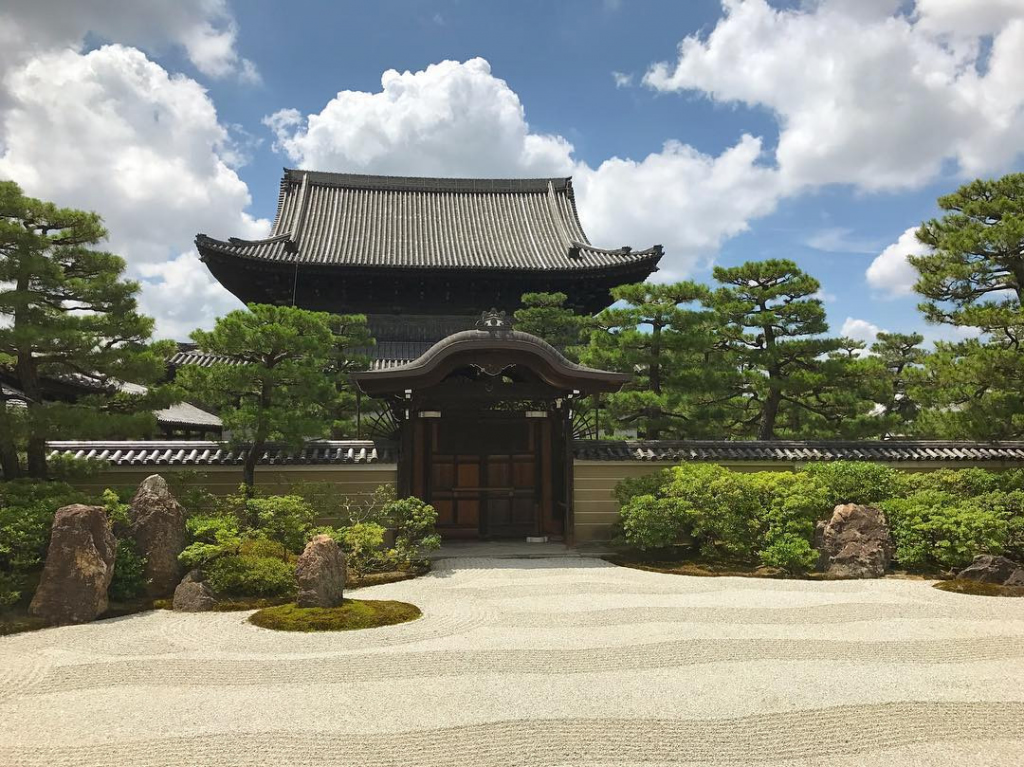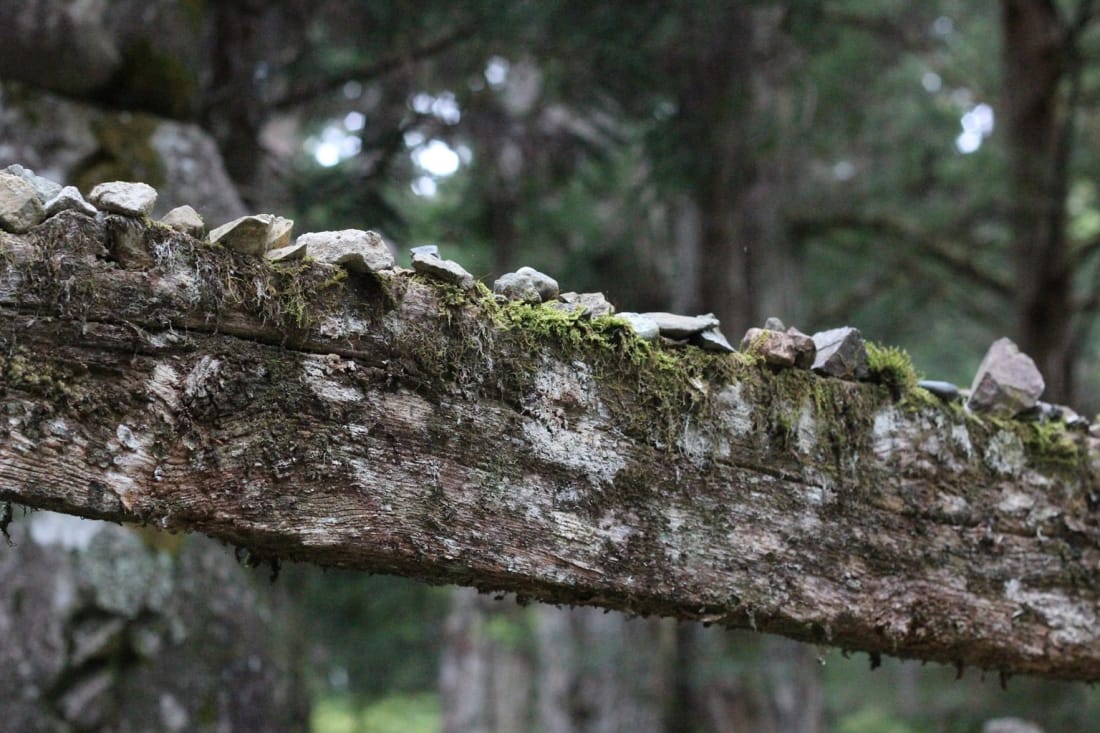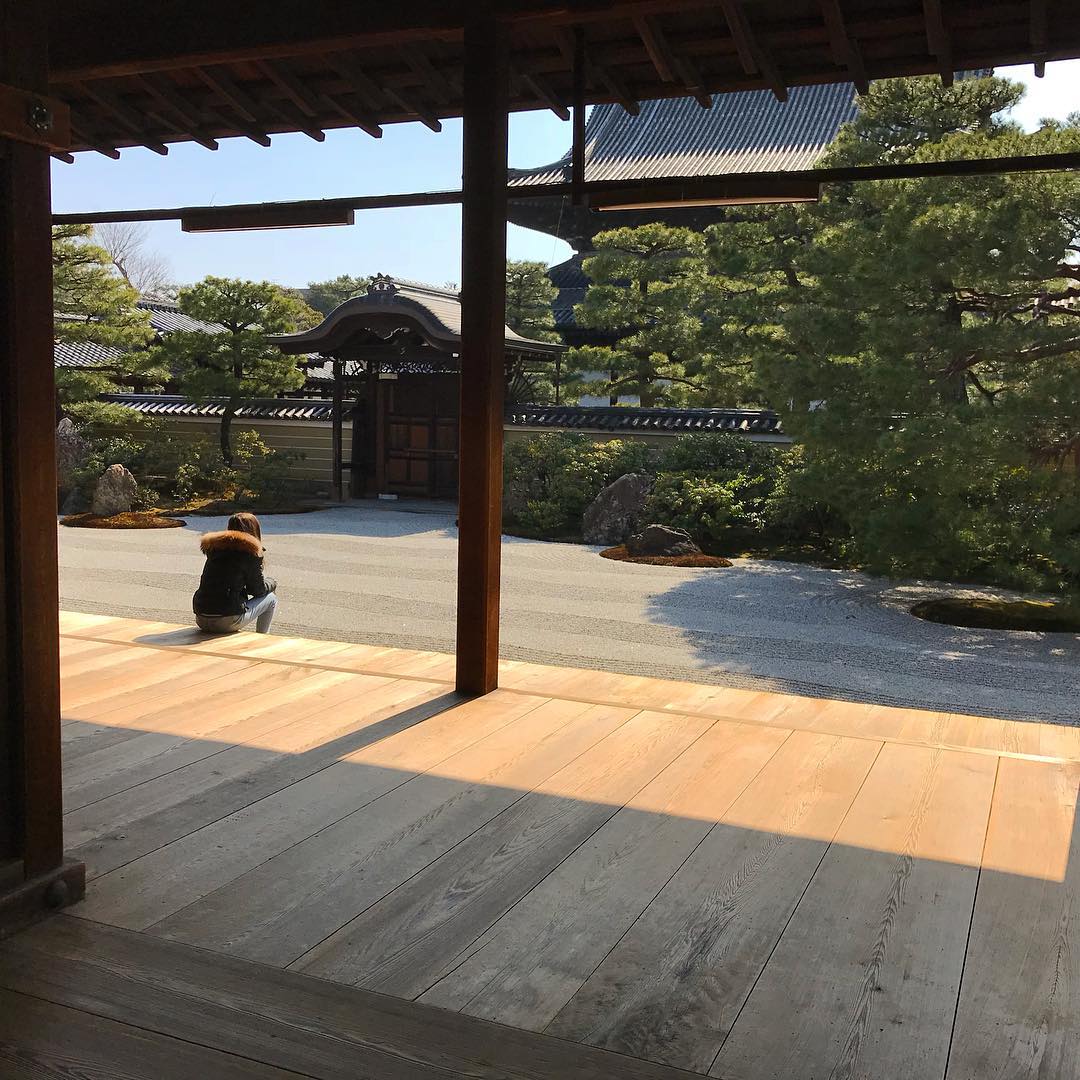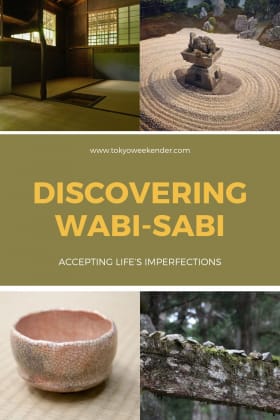Ask a Japanese person to explain the concept of wabi-sabi and you might be met with moment of apprehensive silence. It’s not an easy idea to talk about, and there exists a notion that it’s simply too difficult for outsiders to grasp.
Paradoxically, wabi-sabi can be found all around us, even as we struggle to pin down the exact nature of this elusive concept. While it can present a challenge at first, you can begin to enjoy this unique way of viewing the world with a little dedication and some hands on experience.
Defining the Ephemeral
For centuries, wabi and sabi were originally two separate ideas that only became a hyphenated pair in modern times. Wabi (侘) can refer to the imperfections of objects, the simplicity of everyday items that fulfill a function rather than a form. Sabi (寂) brings to mind the wear and tear that reminds us that nothing lasts forever, and that objects experience their own lives as they are created and fall into decay.
There is undeniable interplay between these two ideas. Imperfections arise through sabi, but we should acknowledge that they were already there in the first place as wabi. In these ever-present flaws, we can find a sense of charming authenticity. Observing and appreciating the imperfection, impermanence and authenticity inherent in existence is what wabi-sabi is all about.
Here are some suggestions for how to jumpstart this profound sense of understanding.
Imperfection: Enjoy a Cup of Tea
The rugged Japanese teacup is a well-known example of wabi-sabi as a design motif. Western artists and designers from the time of the ancient Greeks have praised perfection and imitation, but wabi-sabi ceramics represent a different philosophy.
Consider this basic fact: for a teacup to be a teacup, it needs to hold tea. What else does it have to do? The answer is deceptively simple: nothing. Should the cup’s shape be deep and straight, or shallow and lumpy? Do the sides have to be smooth, or can they have some roughness to them? What about a chip or crack? None of this matters.
Even when the imperfections of a wabi-sabi teacup are immediately apparent, it still remains a perfectly good teacup capable of serving its intended purpose. This is a key point in the wabi-sabi aesthetic: function over form. The imperfections simply add character. A teacup is a teacup is a teacup.
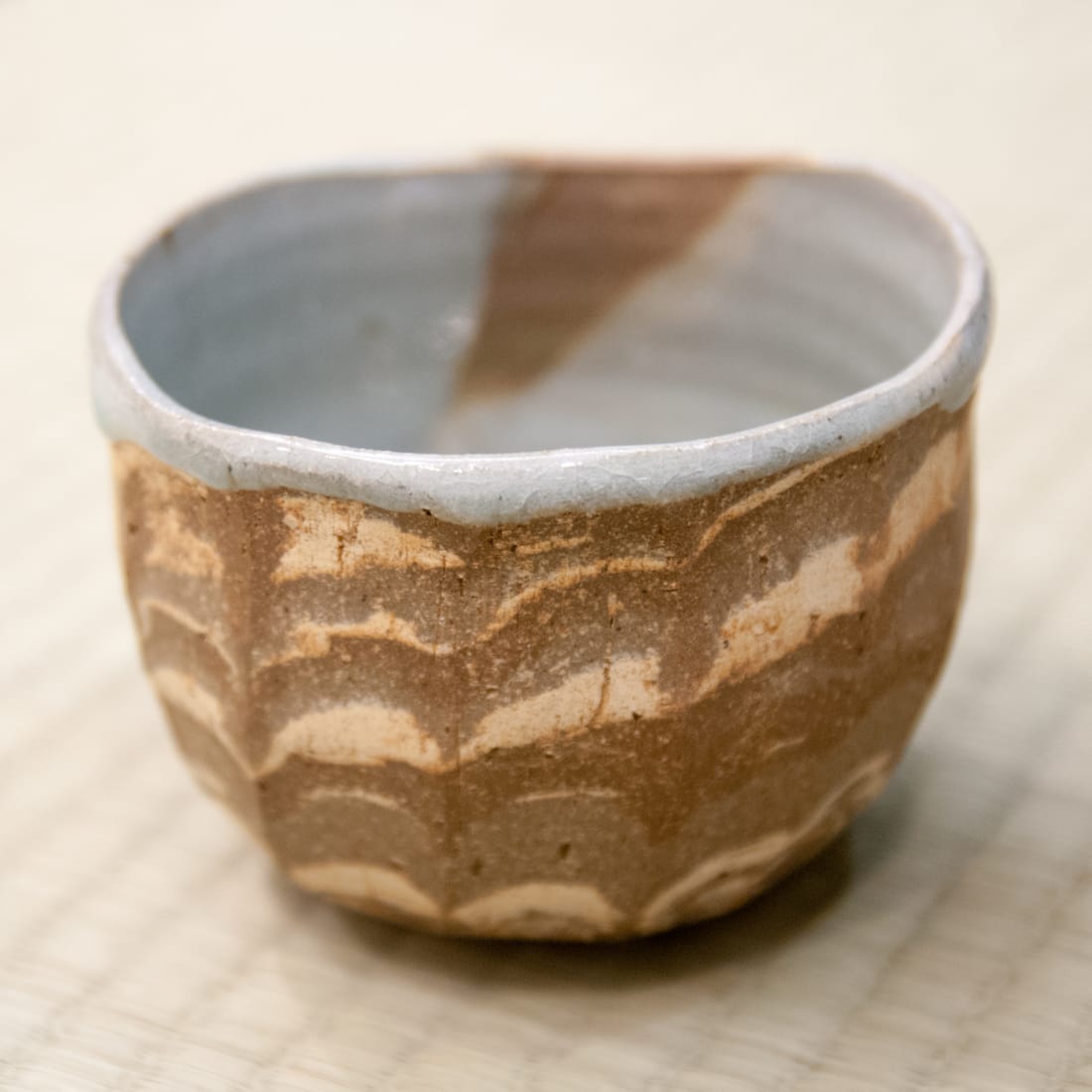
Yet it still remains a unique teacup. Hold the teacup in your hands and feel the flaws that the craftsman allowed to remain. Close your eyes. It remains a teacup even without any visual identity attached to it. Realize that you can drink tea from this cup on another day, but it will never be the same moment as it is right now.
The cup’s wear and tear is increasing every time you drink from it. It will never be the same tea cup, and you will never be the same person. The appreciation of objects even more as they grow increasingly worn and imperfect is the essence the wabi-sabi mindset.

Kenninji temple, Kyoto
Authenticity: Visit a Temple Garden
Japanese gardens offer a multitude of opportunities to observe wabi-sabi in natural settings. Imagine you’ve just entered a classic Zen temple and the garden is laid out before you.
Patterns are finely raked into a white gravel sea. Islands with rugged stones surrounded by moss stand in perfectly balanced isolation throughout the landscape. The hedges that make up the background are all precisely clipped and aligned in groupings that please the eye.
Everything is perfect.
Or is it?
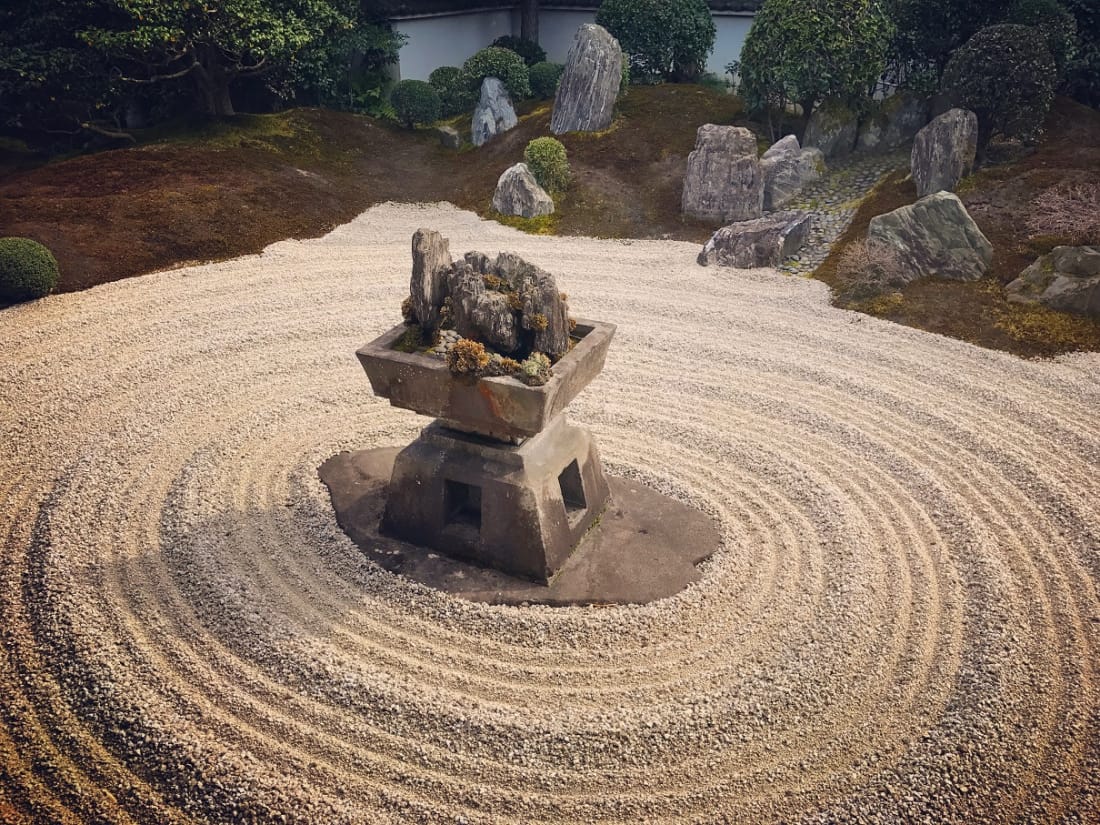
Look closer. Some of the patterns in the gravel have been disturbed by last night’s rainfall. A weed is growing in a distressingly noticeable spot in the center of the landscape. A central stone has bird droppings marring the surface. The face of the garden wall is flaking away and accumulating on the dirt below.
Wait a second, you’ve been fooled. This garden is far from perfect – and the wabi-sabi circuit in your mind suddenly crackles to life.
“A hint of natural decay reminds us of the inescapable imperfection of our own existence.”
Gardens highlight the importance of authenticity in wabi-sabi. Things should never be too perfect, lest they come off as artificial and too well-cared for. After all, an important part of a temple gardener’s job is deciding which weed to pull and which to let grow a little longer. A hint of natural decay reminds us of the inescapable imperfection of our own existence. Once we accept this, we can better search for the true meaning of each moment as we pass through them.
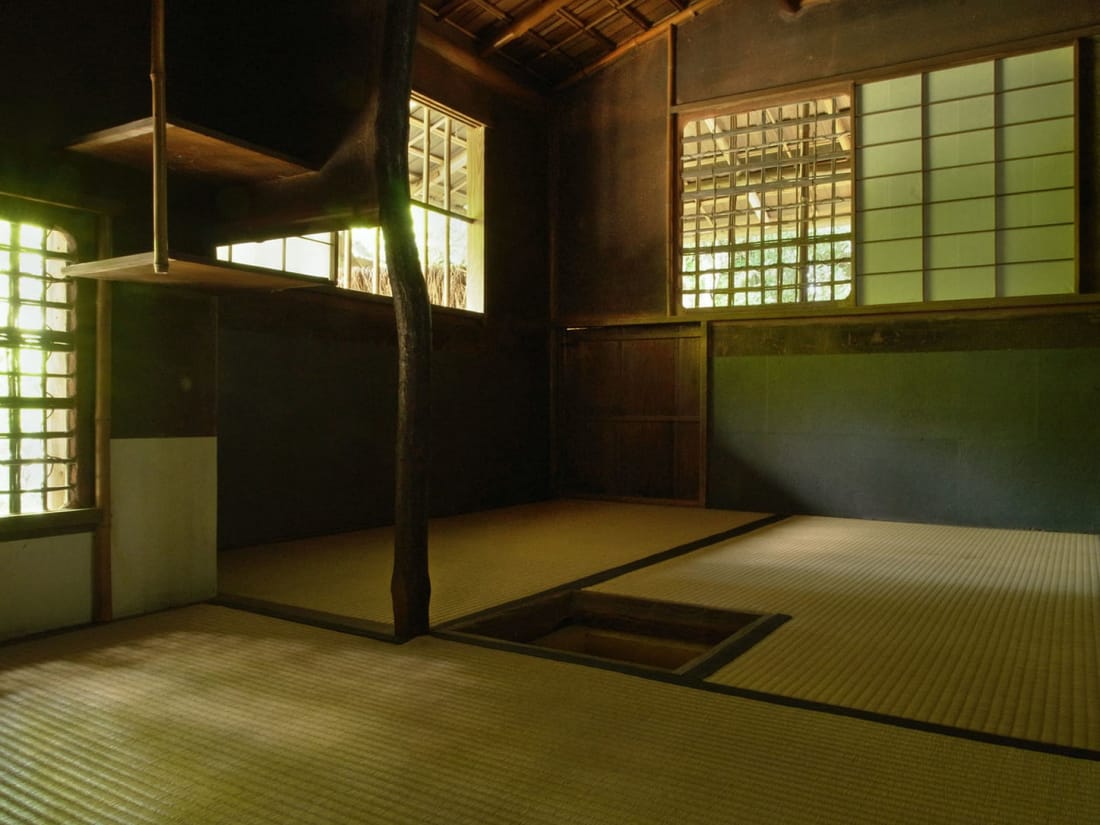
Kotoin tea room
Impermanence: Observe Historic Architecture
Zen teaches us that everything in existence is either being born or dying at any given moment. A sense of impermanence also flows through wabi-sabi, forcing us to reflect upon the transitory and fleeting nature of this world. One way to observe this is by contemplating traditional Japanese architecture.
Consider the traditional tea rooms created by 16th century tea master Sen no Rikyu (whose work can be seen at Kotoin inside of Daitokuji temple complex in Kyoto). His designs use minimal decoration and shadowy angles to convey a sense of confinement from the outside world.
“Nothing lasts forever, and here we can see entropy in action.”
Nowadays, Rikyu’s walls have faded, the wood paneling is tarnished and stains have appeared from natural materials seeping through the painted surfaces. However, to a devotee of wabi-sabi, this only makes the structure more appealing. Searching for wabi-sabi in Japanese architecture is all about observing this decay, even embracing it. The aged patina of these rooms has become just as much a part of their charm as the architectural design. Nothing lasts forever, and here we can see entropy in action.
In a few more centuries, the roof will rot and the walls will collapse. Wabi-sabi challenges us to appreciate these structures – whatever state they might be in – in the here and now.
Going Forward: Apply Wabi-Sabi to Your Life
Once you understand wabi-sabi, you can take the key concepts of impermanence, authenticity and imperfection and apply them to your everyday life.
Accepting decay and limited existence isn’t defeatist, it’s practical in the sense that it allows you to focus on the here and now in new ways. Embracing imperfection in yourself on a personal level can be liberating when you shed all the importance we attach to image and social expectations.
Focus on what you can appreciate now in this moment, without getting caught up in things that will only fade later on down the road. Perhaps there will be a time to come back to those things later on in life when they’ve taken on a deeper shade of charming imperfection.
To an adherent to wabi-sabi, a teacup is simply a teacup, and life is simply life. Accept it – flaws and all – and appreciate the authentic moments as they come.
Updated On April 26, 2021

